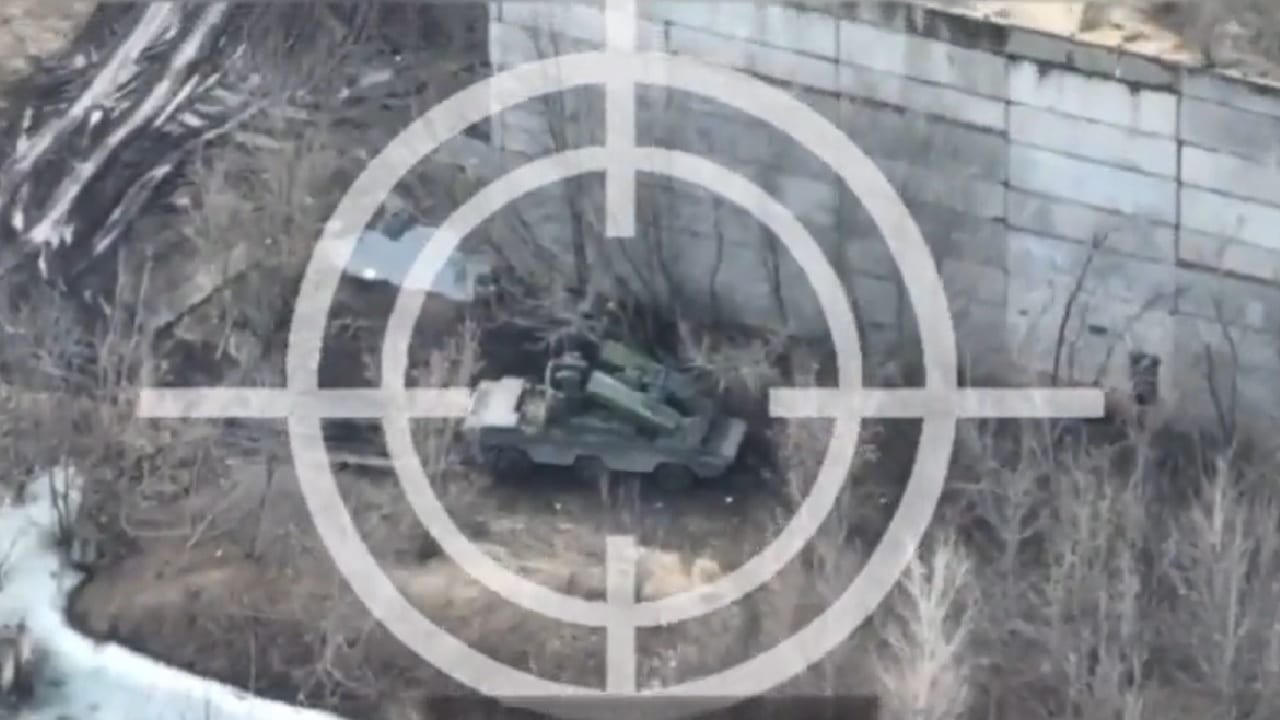First Use of Hydra Laser-Guided Rockets in Ukraine Spotted on Social Media – According to reports shared on social media on Thursday, Ukrainian forces have begun using the long-awaited APWKS laser guidance kits fitted on the Hydra 70 rockets in the Kherson Oblast.
Ukraine Weapons Tracker (@UAWeapons) noted that the launcher is mounted on an M1152A1 HMMWV, a platform that has been provided to the 37th Marine Brigade.
In a nearly 40-second-long video, a number of rockets are seen being launched and striking targets on the far side of the Dnipro River.
It was reported earlier this week that the 37th Marine Brigade has received several other Western-made vehicles, including the French AMX-10 RC tank destroyer, and the U.S. Oshkosh M-ATV MRAP.
“The Marines are conducting regular combat training exercises. There is no weather obstacles, we work both day and night, gaining all the necessary skills and abilities to effectively and lightning fast remove the enemy from our motherland,” a spokesperson for the 37th Marine Brigade said via a statement.
There are reports that the Ukrainian military has already established a beachhead on the left bank of the Dnipro River.
Providing Guidance
The APKWS guidance kit – which was developed by a team that includes BAE Systems, Northrop Grumman, and General Dynamics – can transform an unguided 2.75-inch (70mm) rocket, including the Hydra 70 Mk 66 and others, into precision-guided munitions (PGMs). These, in turn, provide the affordable surgical-strike capability to multiple rotary-wing and fix-wing platforms, and as the defense contractor noted, it was being developed for ground-based platforms.
Based on the footage from the recent video, the APKWS can already be utilized with those ground-based launchers, and it is delivering “pinpoint accuracy for the highest lethality available against soft and lightly-armored targets at a lower cost than other systems.”
The platform is reported to have approximately one-third the cost and one-third the weight of the current inventory of laser-guided weapons. In addition, it has a lower yield more suitable for avoiding collateral damage, while it takes one-quarter of the time for ordnance personnel to load and unload.
According to BAE Systems, since its introduction, more than 50,000 APKWS units have been sold for service worldwide. It is unclear, however, how many have been provided to Kyiv or when the first units arrived.
Empowering the Hydra
Named after the mythical many-headed serpent or monster of Greek mythology, the Hydra 70 is a fin-stabilized unguided rocket that can be equipped with a variety of warheads. It is part of a family of rockets derived from the Mk 4/Mk 40 folding-fin aerial rocket (FFAR) developed in the 1940s.
It can be employed against point and area targets, where it can provide the operator with a lethal and lightweight weapon system with multi-mission capability. The rocket system contains three components: the MK66 MOD 4 rocket motor, one of the nine warheads, and the associated point-detonating, or remote-set fuze(s). When these components are combined, they provide a tailor-made solution to the warfighter’s situational requirements, according to its current manufacturer, General Dynamics Ordnance and Tactical Systems.
#Ukraine: The new Ukrainian 37th Marine Brigade already using the long-awaited ???????? APKWS in #Kherson Oblast. The APWKS is essentially Hydra 70 unguided rockets fitted with a laser guidance kit to create a precision weapon.
In this case the launcher is mounted on a M1152A1 HMMWV. pic.twitter.com/j0PK1QccN1
— ???????? Ukraine Weapons Tracker (@UAWeapons) April 27, 2023
The modular rocket family currently incorporates several different mission-oriented warheads for the Hydra-70 variant, including high-explosive, anti-personnel, multipurpose submunition, red phosphorus smoke, flechette, training, visible-light illumination flare, and infrared illumination flare.
MORE: The F-35 Now Comes in Beast Mode
MORE: Why the U.S. Navy Tried to Sink Their Own Aircraft Carrier
Author Experience and Expertise
A Senior Editor for 19FortyFive, Peter Suciu is a Michigan-based writer. He has contributed to more than four dozen magazines, newspapers, and websites with over 3,200 published pieces over a twenty-year career in journalism. He regularly writes about military hardware, firearms history, cybersecurity, politics, and international affairs. Peter is also a Contributing Writer for Forbes and Clearance Jobs. You can follow him on Twitter: @PeterSuciu.

